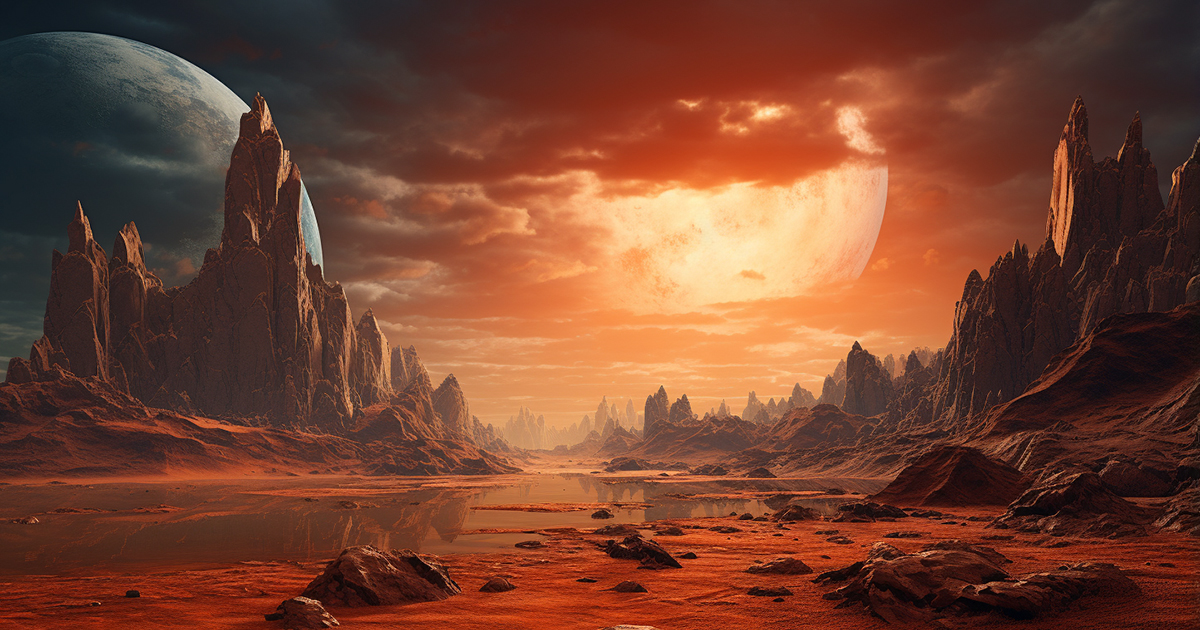The exploration of astronomy continually reshapes our understanding of the vast universe, with pivotal moments discreetly emerging from scientific texts or the lenses of telescopes. These moments unveil phenomena beyond comprehension, redefining our cosmic awareness indefinitely.
In a groundbreaking event in Geneva, Switzerland, back in 1995, astrophysicists from the University of Geneva made a monumental announcement that shifted our perspective of the celestial realm. This revelation, born from their cosmic exploration, marked a profound moment in our understanding of the universe.
Before this breakthrough, the notion of planets orbiting stars beyond our solar system belonged solely to the realm of imagination, existing almost exclusively in science fiction.
The focal point of this historic announcement was the distant celestial body, 51 Pegasi, which uncovered the presence of an exoplanet – a planet orbiting a star outside our solar system. This disclosure reverberated across the scientific community, sparking an astronomical revolution.
An exoplanet fundamentally revolves around a star other than our sun. The crux of this revolutionary find was that, prior to 1995, the existence of such planets was purely speculative.

While the existence of exoplanets was a speculative topic, tangible evidence was scarce. Since that transformative moment, a multitude of discoveries have unraveled, enabling astronomers to pinpoint thousands of exoplanets within our Milky Way galaxy alone.
Identifying habitable exoplanets hinges on various criteria, with a vital aspect being their position within the so-called “Goldilocks Zone.” This zone indicates the ideal distance from a star where environmental conditions are just right.
Not too hot, not too cold – akin to Goldilocks finding the perfect bowl of porridge. Within this realm, temperatures support the presence of liquid water on a planet’s surface – a crucial element for potential life as we know it.
The revelation of exoplanets nestled in this habitable zone has ignited imaginations collectively. Could these distant realms nurture alien life forms? Astronomers emphatically declare yes, citing liquid water as a promising sign for possible extraterrestrial life on these far-off celestial bodies.

In July 2022, Washington, DC witnessed a momentous event as President Joe Biden presented the first image captured by NASA’s James Webb Space Telescope.
Valued at an astounding $10 billion, this cutting-edge instrument flaunts the most advanced infrared imaging technology ever conceived, with a primary mission of scrutinizing planets in the Goldilocks Zone for potential life indicators.
The James Webb Space Telescope’s unparalleled ability to scrutinize exoplanet atmospheres signifies a monumental advancement. By capturing and dispersing light from these distant worlds through a prism, scientists can uncover the chemical compositions of their atmospheres.
This revolutionary feature opens doors to detect unusual chemical signals – a compelling clue to industrial activities, potentially hinting at intelligent civilizations.
As we document an expanding array of exoplanets and gather deeper insights from the James Webb Space Telescope, our understanding of potential extraterrestrial existence expands exponentially.
This extraordinary device serves as a transformative force, providing a fresh perspective into our universe’s past and acting as a gateway to unveil the mysteries of extraterrestrial life.
Witness the Video Below:
Essentially, the journey of exploring exoplanets has transformed from a quiet revelation in scientific literature to an exhilarating quest for signs of life in the cosmic expanse. The Goldilocks Zones of distant stars have transcended theory, offering our best chance of encountering extraterrestrial companions. With the guidance of the James Webb Space Telescope, we stand on the verge of a thrilling era where the mysteries of the universe may finally unravel before us.
